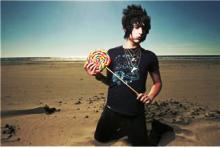What in the world is soft bipolar?
It doesn’t sound so bad does it? Yet many people believe it is a dangerous and destructive mental illness.
There is nothing “soft”, comfy, cozy, easy, or fluffy about any mental health challenge.1
We are not talking about the cute, downy, cuddly chick of mental illness here!
The features of soft bipolar (based on potential diagnostic criteria set out by Goodwin and Jamison in Manic-Depressive Illness: Bipolar Disorders and Recurrent Depression, 2nd Edition, include:
A. At least one major depressive episode.
B. No spontaneous hypomanic or manic episode.
AND
C. Either one of the following, plus at least two items from D, or both of the following plus one item from D:
- A family history of bipolar disorder in a first-degree relative.
- Antidepressant-induced mania or hypomania.
D. If no items from C are present, six of the following 9 are needed:
- Excessive emotionalism and/or excessive activity.
- More than 3 recurrent episodes of major depression.
- Brief major depressive episodes lasting less than 3 months.
- Atypical symptoms of depression such as increased sleep or appetite.
- Psychotic major depressive episode.
- Early age of onset of major depression (before age 25).
- Occurrence of postpartum depression.
- Antidepressant intolerance.
- Lack of response after trying more than 3 different antidepressants.
Major depression? Emotional instability? Possible psychosis? No medications that help?
Soft Bipolar is not soft
In other words, soft bipolar can be pretty dang hard!! (Please note that soft Bipolar is not an official mental health diagnosis according to the Diagnostic and Statistical Manual of Mental Disorders-5th edition or DSM-5, but we feel it is important to discuss because many people fit this symptomatic and behavioral profile that doesn’t quite fit with the diagnostic criteria of Bipolar I and II).
Work on improving treatment and diagnosis has been hampered by disagreements between experts about whether this condition even exists, and how valid is the notion that a spectrum of bipolar disorder exists.
Mental illness is so difficult to diagnose that often the experts can’t agree.
The DSM, (Diagnostic and Statistical Manual of Mental Disorders) is considered the mental health clinician’s bible. However, there are clinicians that are frustrated by the difficulties and constraints on diagnosing soft bipolar using the DSM.
Reminder
Misdiagnosing the different types of bipolar disorder happens more frequently than an accurate diagnosis!
According to the DSM-5, to make an accurate diagnosis a clinician must determine whether the symptoms of depression fall into the category of EITHER unipolar OR bipolar.
Other expert psychiatrists such as Dr. Jim Phelps believe that things are not so cut and dry. Instead of fitting patients neatly into one category or another, he believes in a Mood Spectrum and tries to determine how much bipolarity a person is actually dealing with. He deals more with what is really going on with patients as opposed to what the DSM says the symptoms should be.
Many people fall into this mood spectrum. They see their doctor, get medications and/or counseling, but do not feel any better. In many cases, they may feel worse.

The threshold, according to DSM, for bipolar II disorder is hypomania. However, hypomania can be hard to detect, especially since half of the population may have only one hypomanic day for every 50 days of depression. A diagnosis of unipolar depression will likely be the result and they will be given the wrong medications.
Dr. Phelps cites the work of Hagop Akiskal and other leaders in the field to support his proposal that a bipolar disorder can exist without the presence of hypomania or mania. Experts have labeled this soft bipolar. In these cases, medications designed to treat depression often make the situation worse. The main deciding factor is the length of the depressive episode. In Bipolar Disorder, the depressive episodes are short, frequent and recurrent unlike in chronic unipolar depression.
The bottom-line
The crux of understanding soft bipolar is understanding the spectrum or continuum theory, where at one far end there is full blown Bipolar 1, then further down the spectrum there is Bipolar 2, then a series of milder forms at multiple points, best described as soft bipolar disorder. If the follow the line all the way along to the other far end of the mood spectrum we would eventually reach the other end of the scale, which would be unipolar depression.
Other doctors do not prescribe to the spectrum theory. Also, their concern is that if the so-called spectrum is extended too much it will become theoretically and clinically meaningless.
Some experts argue against soft spectrum bipolar theories
The bottom line seems to be how patients react to medications like antidepressants. Although some research suggests that it is only in Bipolar Type 1 that antidepressants can cause a manic switch, others consider it a risk all the way down the so-called spectrum.
On the upside, a manic switch may help lead to an accurate diagnosis for bipolar instead of depression, but that is a heck of a risk to run, and a price to pay!
Also, research shows that for many bipolar patients, antidepressants are simply ineffective.
Ultimately, managing ANY type of bipolar disorder MUST focus on stabilization and the maintenance of “normal” or “baseline” moods, without swings into either mania or depression.
The constant mood cycles and ups and downs in energy levels has a very negative impacts on the daily lives of individuals.2
The most effective treatment for people living with soft bipolar is focusing on the stabilizers in their lives, which include adequate sleep, good diet, exercise and positive social influences. These stabilizing lifestyle factors can go a long way towards slowing down and minimizing the cycles.
References:
1https://www.ncbi.nlm.nih.gov/pubmed/12462857
2https://www.news-medical.net/news/20140731/e28098Softe28099-bipolar-spectrum-disorders-differ-from-depression.aspx
 Medically reviewed by
Medically reviewed by